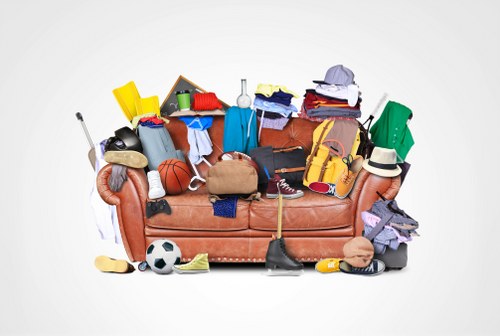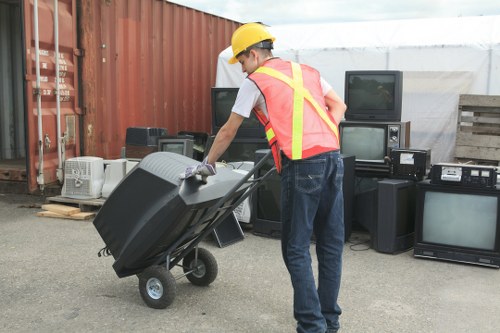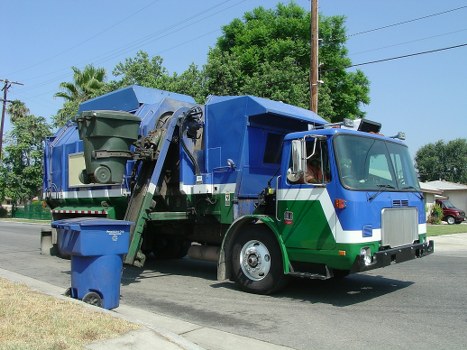Effective Bed Disposal in Mattress Disposal: Your Comprehensive Guide
Understanding Bed Disposal

Bed disposal is an essential aspect of maintaining a clean and healthy living environment. Whether you're upgrading your mattress or simply decluttering, knowing how to properly dispose of your old bed ensures that it doesn't contribute to environmental waste.
Mattress disposal, a subset of bed disposal, involves specific steps due to the materials used in mattresses. These steps help in reducing landfill waste and promoting recycling efforts.
Improper disposal can lead to environmental hazards, such as land pollution and increased greenhouse gas emissions. Therefore, understanding the correct methods is crucial.
Why Proper Bed Disposal Matters

Proper bed disposal is not just about decluttering; it plays a significant role in environmental conservation. Mattresses are large and heavy, making them challenging to dispose of without proper methods.
Additionally, mattresses contain various materials like springs, foam, and fabric, which can be harmful if not recycled or disposed of correctly. These materials can take decades to decompose, contributing to landfill overflow.
Moreover, following proper disposal methods ensures compliance with local regulations, avoiding potential fines and penalties associated with illegal dumping.
Steps for Effective Mattress Disposal

Disposing of a mattress requires careful planning and execution. Here are the steps to ensure effective disposal:
- Assess the Condition: Determine if the mattress is still usable. If in good condition, consider donating to charities or giving it to someone in need.
- Contact Local Disposal Services: Reach out to your local waste management services to understand the options available for mattress disposal.
- Recycling: Look for recycling centers that accept mattresses. Recycling helps in breaking down materials for reuse.
- Professional Removal: Hire professional disposal services for thorough and safe removal of the mattress.
- Prepare for Transport: Ensure the mattress is properly packaged and ready for transportation if you're handling it yourself.
Following these steps can make the mattress disposal process smooth and environmentally friendly.
Environmental Impact of Improper Mattress Disposal

Improper mattress disposal can have severe environmental consequences. Mattresses take up significant space in landfills due to their bulky nature. The decomposition process of mattresses can release methane, a potent greenhouse gas, contributing to climate change.
Moreover, the synthetic materials used in mattresses, such as polyurethane foam and metal springs, do not biodegrade easily. These materials can persist in the environment for decades, causing long-term pollution.
Additionally, flame retardants and other chemicals used in mattresses can leach into the soil and water, posing risks to wildlife and human health.
Recycling Options for Mattresses

Recycling is a sustainable way to dispose of mattresses, allowing valuable materials to be reused. Here's how the recycling process works:
- Collection: Mattresses are collected from various sources, including households, businesses, and donation centers.
- Inspection: The collected mattresses are inspected to determine their recyclability. Usable parts are separated from non-recyclable ones.
- Disassembly: The mattress is disassembled into its components, such as metal springs, foam, and fabric.
- Processing: Each material is processed accordingly. For instance, metal springs are melted down, and foam is shredded for reuse.
- Reutilization: Recycled materials are used to create new products, reducing the need for virgin materials.
Engaging in mattress recycling helps conserve resources and minimize environmental impact.
Local Regulations and Guidelines
Different regions have varying regulations regarding mattress disposal. It's essential to be aware of local laws to ensure compliance.
Many municipalities offer specific guidelines on how to dispose of large items like mattresses. These may include designated collection days, drop-off locations, and fees associated with disposal.
Failure to adhere to these regulations can result in penalties. Therefore, consulting your local waste management authority is advisable before proceeding with bed disposal.
Donation and Reuse Programs
If your mattress is still in good condition, donating it is an excellent way to extend its life and benefit others. Numerous charities and non-profit organizations accept gently used mattresses.
Before donating, ensure the mattress meets the organization's requirements, such as being free from pests, stains, and damage. Proper sanitation and maintenance can increase the chances of successful donation.
Reusing mattresses not only helps those in need but also reduces the overall demand for new mattresses, conserving resources and energy.
Hiring Professional Disposal Services
Professional mattress disposal services offer a hassle-free solution for getting rid of old beds. These services handle everything from pickup to proper disposal or recycling.
When choosing a disposal service, consider factors like reputation, pricing, and environmental practices. Opting for companies that prioritize recycling ensures that your mattress contributes to sustainability efforts.
Additionally, professional services can save you time and effort, making the disposal process efficient and convenient.
DIY Mattress Disposal Tips
If you prefer handling mattress disposal yourself, here are some tips to make the process easier:
- Measure Transportation Space: Ensure your vehicle can accommodate the mattress size.
- Protect the Mattress: Use a mattress bag or cover to protect it during transport.
- Schedule a Pickup: Arrange for a curbside pickup with your waste management service if available.
- Separate Components: If possible, separate recyclable parts like metal springs and foam.
- Follow Local Guidelines: Adhere to disposal rules and regulations in your area.
These tips can help streamline the DIY mattress disposal process.
Cost Considerations
The cost of mattress disposal varies based on factors such as location, disposal method, and service provider. Recycling and donation options are often more cost-effective compared to landfill disposal.
Some municipalities offer free pickup services for large items within specific guidelines. Alternatively, professional disposal services may charge a fee based on the size and weight of the mattress.
It's advisable to compare costs and services from different providers to find the most affordable and suitable option for your needs.
Benefits of Proper Bed Disposal
Engaging in proper bed disposal offers numerous benefits:
- Environmental Protection: Reduces landfill waste and pollution.
- Resource Conservation: Promotes recycling and reuse of materials.
- Health Safety: Prevents the spread of pests and diseases associated with old mattresses.
- Regulatory Compliance: Ensures adherence to local disposal laws.
- Community Support: Donation programs assist those in need.
These benefits highlight the importance of adopting responsible bed disposal practices.
Common Mistakes to Avoid
Avoiding common mistakes can enhance the effectiveness of mattress disposal:
- Ignoring Local Regulations: Always check local laws to avoid penalties.
- Discarding Without Assessment: Evaluate if the mattress can be donated or recycled before disposal.
- Improper Packaging: Protect the mattress adequately during transportation to prevent damage.
- DIY Without Planning: Plan the disposal process to ensure it proceeds smoothly.
- Neglecting Safety: Use appropriate lifting techniques to prevent injuries during disposal.
Being mindful of these mistakes ensures a responsible and efficient mattress disposal process.
Innovative Mattress Recycling Technologies
Advancements in recycling technologies have improved the efficiency of mattress disposal. Innovative methods allow for better separation and processing of mattress components.
For example, some recycling facilities use automated systems to dismantle mattresses quickly, extracting valuable materials like steel springs and foam for reuse.
These technologies not only speed up the recycling process but also enhance the quality of recycled materials, making them suitable for various applications.
Future of Bed and Mattress Disposal
The future of bed and mattress disposal lies in sustainable practices and technological advancements. Increased awareness about environmental conservation is driving demand for eco-friendly disposal methods.
Innovative recycling techniques and stricter regulations are likely to shape the industry, promoting responsible disposal and reducing environmental impact.
Additionally, manufacturers are exploring designs that make mattresses easier to disassemble and recycle, further supporting sustainability efforts.
Conclusion and Next Steps
Proper bed disposal, particularly mattress disposal, is crucial for environmental conservation and public health. By following the outlined steps and considering recycling and donation options, you can ensure that your old mattress is disposed of responsibly.
Take action today to contribute to a cleaner, healthier environment. Contact us today to learn more about effective mattress disposal services in your area and make a positive impact.